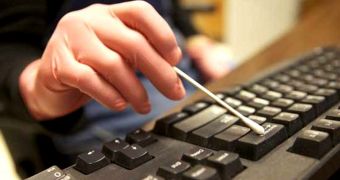For many years, forensics experts have been using fingerprints, and more recently DNA tests, as evidence in courtrooms. Many perpetrators were captured because they accidentally left behind the trace of one of their fingers on a random object, but now their leeway for error is about to get even smaller. According to researchers at the University of Colorado in Boulder (UCB), the bacterial cultures that each of us carry on our hands are uniquely ours, and they could provide an additional means of conducting forensics science, LiveScience reports.
This is nothing but bad news for criminals, which could soon find themselves in the interesting position of having to be careful where they drop their bacteria. Given that thousands of the microorganisms exist on each of our hands, it stands to reason that you can't always be so careful as to avoid leaving at least a minute trace of the pathogens around. In order to get an idea of precisely how many bacteria there are in the human body, you can simply imagine that you have smaller number of cells than there are microorganisms. Billions upon billions of bacteria live on the skin, in the oral cavity, and in the intestines. In fact, without this last group, we would not be able to digest our foods.
UCB expert Noah Fierer demonstrated in past studies that no more than 13 percent of all bacteria species on human hands were shared between individuals. This means that the remaining 87 percent can be traced directly to a single individual, in very much the same way fingerprints point at the perpetrator. “The obvious question then was whether we could identify objects that have been touched by particular individuals,” the expert says. “Each one of us leaves a unique trail of bugs behind as we travel through our daily lives. While this project is still in its preliminary stages, it could provide a way for forensics experts to independently confirm the accuracy of DNA and fingerprint analyses,” he explains.
In a series of experiments to validate the new proof-of-concept, the UCB experts swabbed keyboards and computer mice for bacterial DNA, and then collected samples from the fingers and palms of the computer owners, and from unrelated individuals. The last group had never touched those particular computers, and the work revealed that the comparisons were in favor of the individuals that had touched the computer by a large margin. This means that the similarities between the samples collected from the keys and the bacterial DNA harvested from the unrelated individuals were negligible.

 14 DAY TRIAL //
14 DAY TRIAL //